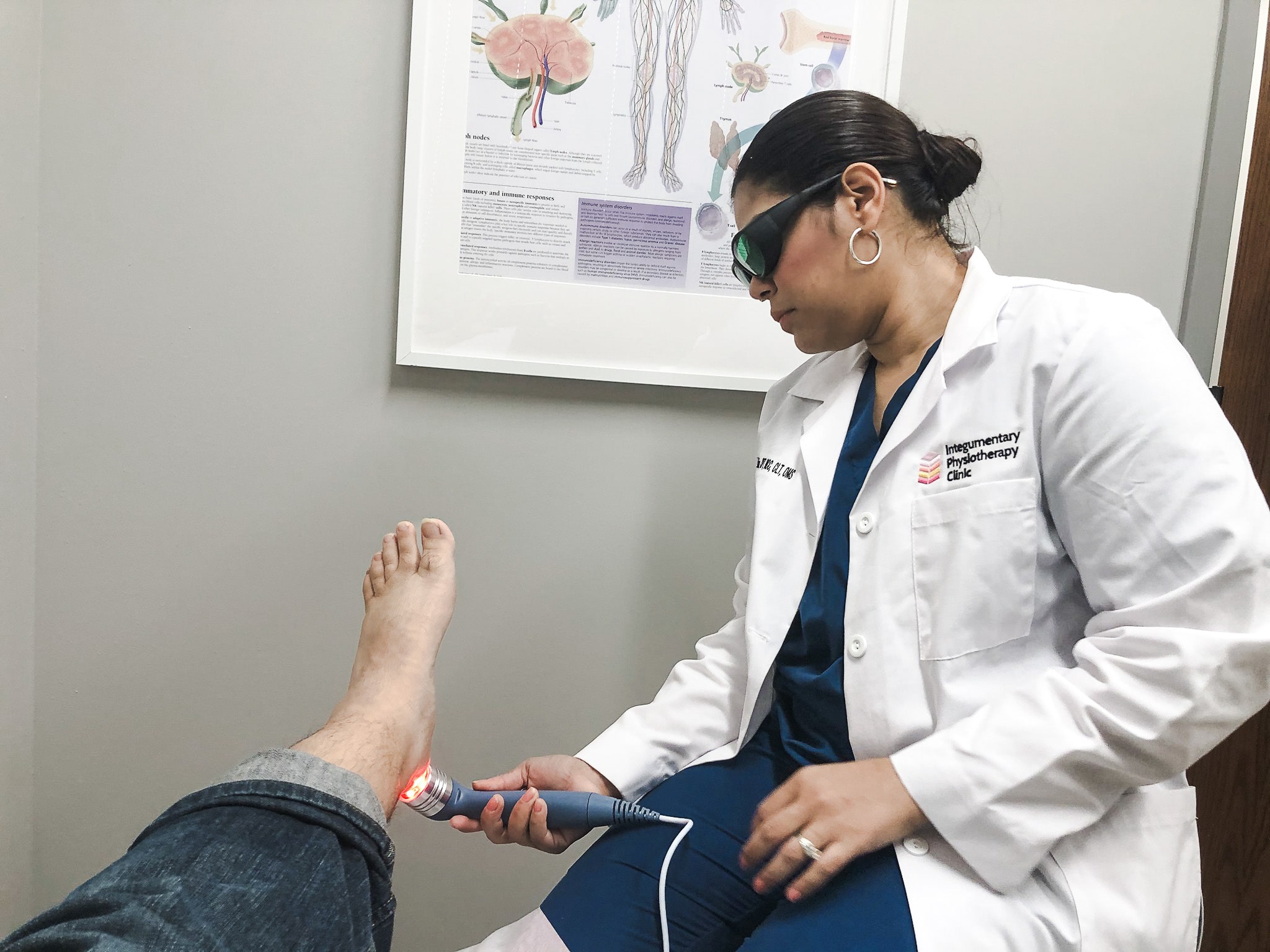Living with lymphedema and diabetic sores on feet can be difficult to cope with as it dramatically affects one’s quality of life. It can create discomfort, swelling, and pain and may restrict your mobility. Thankfully, advancements in medical technology have led to low-level laser therapy, a cutting-edge treatment used to alleviate the symptoms of these chronic medical conditions. This blog post aims to provide insightful information about LLLT’s beneficial effects in treating lymphedema and diabetic foot ulcers, explaining the treatment process, benefits, and downsides. We hope this post will spur the use of LLLT as an effective, non-invasive, and cost-effective modality for patients with these conditions.
What is LLLT, and How Does It Work in Treating Lymphedema and Diabetic Foot Ulcers?
LLLT, also known as “photobiomodulation,” is a medical technique that utilizes the properties of low-level red and infrared light to trigger a regenerative response in tissues and cells to heal by producing ATP. This ATP production leads to better circulation, which aids in tissue healing and regeneration. In treating lymphedema and diabetic foot ulcers, LLLT is used to increase the rate of lymphatic drainage and blood flow to the affected areas, resulting in reduced swelling and pain as well as faster healing of wounds.
LLLT for Lymphedema
Lymphedema occurs due to a damaged lymphatic system, resulting in swelling in the limbs or other parts of the body. LLLT helps in increasing the lymphatic system’s regeneration and efficacy, thus reducing swelling and pain. LLLT can also help to reduce lymphatic fluid build-up, acquiring tissues’ good oxygen and nutrients and decreasing the chance of infection and scarring.
LLLT for Diabetic Foot Ulcers and Diabetic Sores
People with diabetes are prone to nerve damage that can lead to chronic foot ulcers. It is a severe complication that, if left untreated, could eventually lead to amputation. LLLT helps diabetic foot ulcer patients by increasing circulation, which increases the affected area’s healing process. The light also stimulates cell growth, which helps to regenerate new tissue faster.
What are the Benefits and Downsides of LLLT?
One of the primary benefits of LLLT is its effectiveness in reducing pain and inflammation. It can help patients avoid surgery, decrease wound healing time, and improve their quality of life. LLLT is non-invasive, unlike surgery, and has no harmful side effects. However, the downside of LLLT is that it usually requires several sessions before its effects become noticeable. Additionally, the treatment is often costly, and many insurance companies do not cover it.
Conclusion:
LLLT, also known as photobiomodulation, is a cutting-edge medical technique successfully used to treat lymphedema and diabetic foot ulcers. The treatment is safe, non-invasive, and extremely effective in reducing pain, inflammation, swelling, and aiding wound healing. LLLT can be a game-changer for patients’ quality of life, particularly those struggling with lymphatic and diabetic foot sores challenges. In conclusion, we hope this blog post will encourage healthcare practitioners and patients to consider LLLT as a contributing modality to alleviate their symptoms.
